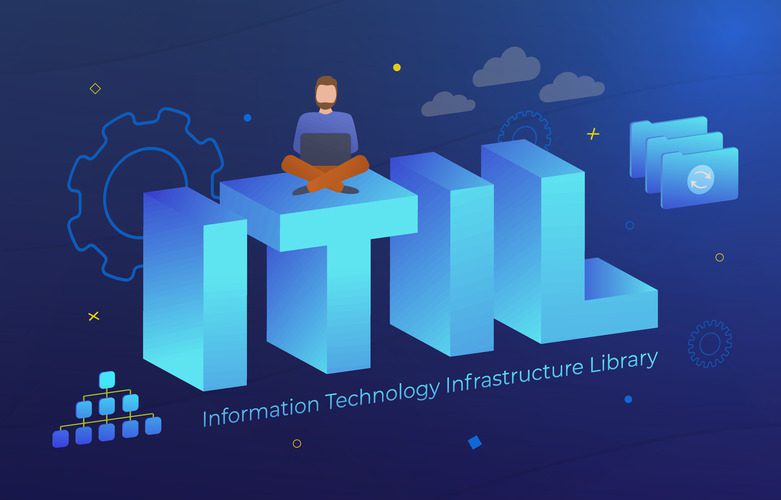In today's fast-paced digital world, effective IT service management is crucial for businesses to thrive. ITIL (Information Technology Infrastructure Library) is a widely adopted framework that provides guidance on IT service management (ITSM) best practices. This blog post serves as a comprehensive guide to the ITIL framework, explaining its key concepts, benefits, and how to implement it effectively within your organization.
What is ITIL?
ITIL is a set of practices and guidelines that help organizations align their IT services with their business needs. Originally developed by the UK government in the 1980s, ITIL has evolved over the years and is now maintained by AXELOS, a joint venture between the UK government and Capita plc. It is a globally recognized framework used by organizations of all sizes and industries to improve the quality of their IT services.
The Core Components of ITIL
ITIL consists of five core publications, each focusing on different aspects of IT service management:
1. Service Strategy
Service Strategy is the first phase of the ITIL service lifecycle. It helps organizations define their service offerings, target customer segments, and align their services with business goals. Key activities in this phase include defining service portfolios, conducting market research, and setting service level agreements (SLAs).
2. Service Design
Service Design is the phase where IT services are designed, including infrastructure, processes, and applications. It ensures that services are not only functional but also efficient and cost-effective. Activities in this phase include creating service catalogs, designing IT architectures, and planning for service continuity.
3. Service Transition
Service Transition focuses on transitioning new or modified services into the production environment. This phase includes change management, release and deployment management, and knowledge management. It ensures that changes are implemented smoothly and do not disrupt existing services.
4. Service Operation
Service Operation is the phase where IT services are delivered and maintained on an ongoing basis. It includes incident management, problem management, event management, and request fulfillment. The goal is to ensure that services meet agreed-upon service levels and provide value to the business.
5. Continual Service Improvement (CSI)
CSI is an ongoing process that aims to improve IT services and processes continuously. It involves measuring performance, identifying areas for improvement, and implementing changes to enhance service quality. CSI is a crucial aspect of ITIL, as it ensures that IT services evolve to meet changing business needs.
Benefits of Implementing ITIL
Implementing the ITIL framework offers numerous benefits to organizations:
1. Improved Service Quality
ITIL helps organizations deliver higher-quality IT services by providing best practices for service design, operation, and improvement. This leads to increased customer satisfaction and trust.
2. Cost Reduction
Efficient IT service management, as promoted by ITIL, can lead to cost savings by eliminating waste, improving resource allocation, and optimizing processes.
3. Better Alignment with Business Objectives
ITIL encourages close alignment between IT services and business goals. This ensures that IT investments and activities support the organization's strategic objectives.
4. Enhanced Communication and Collaboration
ITIL promotes collaboration and communication within IT teams and between IT and other business units. This fosters a culture of transparency and cooperation.
5. Faster Problem Resolution
The ITIL framework provides structured approaches to incident and problem management, leading to quicker resolution times and reduced downtime.
6. Clearer Roles and Responsibilities
ITIL defines roles and responsibilities within IT service management, reducing confusion and ensuring that tasks are assigned to the right individuals or teams.
7. Scalability
ITIL is flexible and scalable, making it suitable for organizations of all sizes. Whether you're a small startup or a large enterprise, you can tailor ITIL practices to fit your needs.
Implementing ITIL in Your Organization
Implementing ITIL is a significant undertaking that requires careful planning and commitment. Here are the key steps to get started:
1. Assess Your Current State
Before diving into ITIL implementation, assess your organization's current ITSM practices. Identify strengths and weaknesses to determine where improvements are needed.
2. Define Clear Objectives
Set clear and measurable objectives for your ITIL implementation. What specific goals do you want to achieve, such as reducing incident resolution time or improving customer satisfaction?
3. Get Buy-In from Leadership
Securing support from top management is crucial for the success of your ITIL initiative. Ensure that leadership understands the benefits and is committed to the process.
4. Training and Certification
Invest in training and certification for your IT staff. ITIL certifications, such as ITIL Foundation, are available at different levels and provide a structured approach to learning ITIL practices.
5. Design and Document Processes
Map out your ITIL processes and create clear documentation. This includes defining workflows, roles and responsibilities, and service catalogs.
6. Pilot Implementation
Start with a pilot implementation to test your ITIL processes in a controlled environment. Gather feedback and make necessary adjustments before rolling out the framework organization-wide.
7. Monitor and Continuously Improve
Regularly monitor key performance indicators (KPIs) to measure the success of your ITIL implementation. Continuously look for ways to improve processes and service quality.
Challenges and Considerations
While ITIL offers numerous benefits, it's essential to be aware of potential challenges:
1. Resistance to Change
Implementing ITIL may face resistance from employees accustomed to existing processes. Effective change management and communication are essential to address this challenge.
2. Resource Allocation
ITIL implementation requires an investment in training, tools, and documentation. Ensure that you allocate the necessary resources to support the initiative.
3. Tailoring ITIL
ITIL is a framework, not a one-size-fits-all solution. It may require customization to align with your organization's unique needs and culture.
4. Ongoing Maintenance
ITIL is not a one-time project but an ongoing commitment to continuous improvement. Allocate resources for maintaining and updating ITIL practices.
Conclusion
The ITIL framework is a powerful tool for organizations looking to enhance their IT service management practices. It offers a structured approach to aligning IT services with business objectives, improving service quality, and reducing costs. By following the steps outlined in this guide and addressing potential challenges, your organization can successfully implement ITIL and reap its numerous benefits. ITIL is not just a framework; it's a pathway to excellence in IT service management.
Source: https://www.diigo.com/item/note/ajglz/wocd?k=d814a67d3be11d03bb5cc4ac1bbea8c8


No comments yet